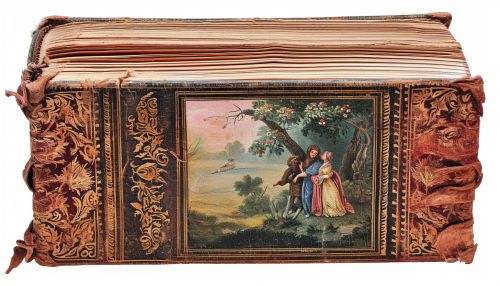Fables
Origins and History
Fables are a genre of literature that have been a part of human culture for thousands of years. The term "fable" comes from the Latin word "fabula", which means story or tale. Fables are typically short stories that convey a moral lesson, often through the actions of anthropomorphized animals or inanimate objects.
The earliest known fables were created in ancient India around the 5th century BCE. These fables were part of the Panchatantra, a collection of Indian animal fables that were written in Sanskrit. The Panchatantra is considered the oldest collection of fables in the world, and its stories have been translated into many languages and have influenced numerous other fable collections.


In ancient Greece, the most famous creator of fables was Aesop, who lived around the 6th century BCE. Aesop's fables are some of the most well-known and widely translated fables in the world. They have been passed down through generations and are still taught in schools today. Some of the most famous Aesop's fables include "The Tortoise and the Hare", "The Boy Who Cried Wolf", and "The Lion and the Mouse".
Characteristics of Fables
Fables have several defining characteristics that set them apart from other forms of literature. One of the most distinguishing features of a fable is its moral lesson. The moral of a fable is a simple, universal truth that is conveyed through the actions of the characters in the story. The moral is often stated explicitly at the end of the fable, but it can also be implied through the events of the story.
Another defining characteristic of fables is the use of anthropomorphism. In many fables, animals, plants, and inanimate objects are given human characteristics and abilities. These anthropomorphized characters often represent different human traits and behaviors, and their actions and interactions serve to illustrate the moral of the story.
Fables are also characterized by their brevity. They are typically short stories that can be read or told in a few minutes. This brevity allows the moral of the story to be conveyed quickly and effectively, making the fable a powerful tool for teaching and instruction.
Types of Fables
There are several different types of fables, each with its own unique characteristics and storytelling techniques. Some of the most common types of fables include:
- Animal Fables: These are the most common type of fables. In these stories, animals are given human characteristics and their actions serve to illustrate a moral lesson. Examples of animal fables include Aesop's "The Tortoise and the Hare" and "The Lion and the Mouse".
- Human Fables: In these fables, humans are the main characters and their actions and interactions serve to convey a moral lesson. An example of a human fable is Aesop's "The Boy Who Cried Wolf".
- Inanimate Object Fables: These fables feature inanimate objects as the main characters. These objects are given human characteristics and their actions serve to illustrate a moral lesson. An example of an inanimate object fable is Aesop's "The North Wind and the Sun".
- Plant Fables: In these fables, plants are the main characters. Like in other types of fables, these plants are given human characteristics and their actions serve to illustrate a moral lesson. An example of a plant fable is Aesop's "The Oak and the Reeds".
Influence and Impact
Fables have had a significant impact on literature and culture throughout history. They have been used as a tool for teaching moral and ethical lessons, and their simple, universal truths have resonated with people of all ages and cultures.
Fables have also influenced other forms of literature. Many famous authors, including George Orwell and Beatrix Potter, have used the fable format in their works. Orwell's "Animal Farm" is a political fable that uses anthropomorphized animals to critique the Soviet Union, while Potter's "Peter Rabbit" series uses animal fables to teach lessons about responsibility and consequences.


In addition to their influence on literature, fables have also had a significant impact on other forms of media. They have been adapted into films, television shows, and even video games. These adaptations have helped to keep the tradition of fable storytelling alive and have introduced these timeless stories to new generations of readers and viewers.
See Also
- Folktales - Myths - Legends - Parables - Allegories
